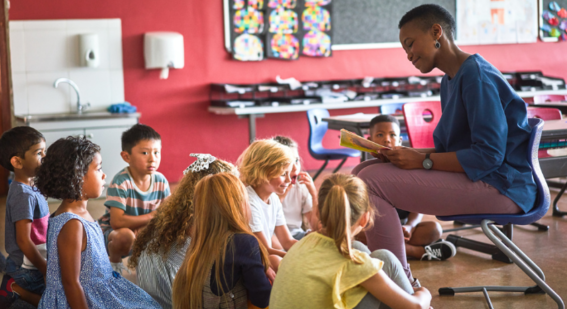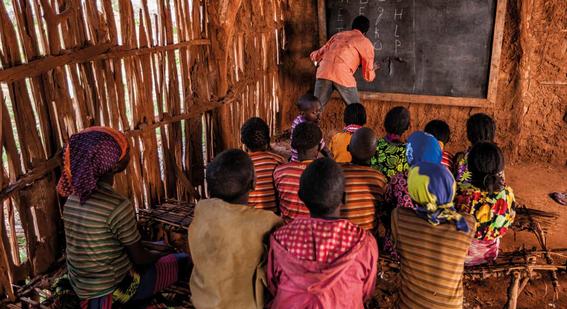Sustainable Development Goals
In this blog post, we look at the impact that COVID-19 emergency responses could have on a long-term vision for a more sustainable future.

In 2015, 193 United Nations Member States adopted the 2030 Agenda for Sustainable Development. At the heart of the Agenda are 17 Sustainable Development Goals (SDGs), representing an urgent call for action for global partnership to end poverty and deprivation, improve health and education, reduce inequality, encourage economic growth, and tackle climate change and environmental destruction. The SDGs are a powerful and ambitious lens through which governments around the world can view policy and partnership.
However, like so many things, the ongoing Covid-19 crisis risks undoing many years’ worth of progress and effort. In this post we will explore some of the ways that the crisis is worsening existing inequalities in society.
What Are Sustainable Development Goals?
The SDGs are an urgent call for action by all countries – developed and developing – in a global partnership. They’re designed to tackle poverty, improve health and spur on education. They currently include the following:
- No poverty
- Zero hunger
- Good health and well-being
- Quality education
- Gender equality
- Clean water and sanitation
- Affordable and clean energy
- Decent work and economic growth
- Reduced inequalities
- Sustainable cities and communities
- Responsible consumption and production
- Climate action
- Life below water
- Life on land
- Peace, justice and strong institutions
- Partnerships for the goals
But how has COVID-19 made achieving Sustainable Development Goals more difficult? And what are the challenges that countries face as a result of the pandemic?
Challenges in Achieving Sustainable Development Goals
School closures and school attendance
At the height of the crisis in April 2020, 1.6 billion students around the world were out of school. For some, education continued remotely – through radio, TV, online, WhatsApp, Telegram, or print materials – but for others, often the most vulnerable or disadvantaged, education stopped. While some countries eventually moved into a period of re-opening with students heading back into the classroom, others remain closed, resulting in significant disruption to education.
That last point is worth reiterating: some children have been out of school for the best part of a year. This is a heart-breaking education crisis that goes well beyond concerns about the learning gap. This is the end of many children’s education.
Sustainable Development Goals and Education
Research into education crises tells us several things about what is likely to happen as a result of this extended period of school closure:
- Children with educated parents who are engaged in and supportive of their learning will have a less significant loss of learning during the period of school closure (Andrabi, Daniels, Das, 2020; Sharp, et al., 2020).
- Fewer students will return to school when schools re-open. This is a pattern seen repeatedly in crises, including those where there is no damage to school buildings or infrastructure (Jacoby and Skoufias, 1997; Jensen, 2000).
- The majority of students who do not return to school will be from the poorest and most vulnerable parts of society (World Bank, 2020; WHO, 2009).
- Of those most vulnerable students, girls will bear the greatest negative cost (Denny, 2015; Fraser, 2020).
These findings directly threaten the Sustainable Development Goals to provide universal quality education, gender equality, and reduce inequality. As we will demonstrate later, these are not the only SDGs under direct threat from the impact of Covid-19 on schools.
School Attendance
This makes for grim reading, but it does not need to be the case. In the first post in this series we highlighted that the 2005 Pakistan earthquake did not result in lower attendance. While we can see that the period of disruption had a significant, long-lasting impact on students’ learning, the initial work to get students back to school appeared to be highly successful.
"We find no evidence of a decline in current school enrolment in earthquake-affected areas. Within 20km of the earthquake, it led to school closures lasting 14 weeks on average, so these data suggest that children being out of school for a substantial period of time did not lead to higher dropout rates in this region. Neither were there any differential gender effects on enrolment. This is a remarkable result given a large literature on gender bias in education in Pakistan, and the fact that two of the four districts in our survey are in Khyber Pakhtunwa where gender bias can be quite severe. Although there is a difference in enrolment rates for girls and boys, there is no evidence that being out of school exacerbated these differences further."
Human Capital Accumulation and Disasters: Evidence from the Pakistan Earthquake of 2005; Andrabi, Daniels, Das; Research on Improving Systems of Education (RISE), 2020
The final post in this series, 'Developing an effective policy response to crisis', looks at what governments can do in crisis situations to ensure students return to school after periods of disruption. Enrolment in education is increasingly enshrined in policy, but legislation is not the only factor determining young people’s futures. For the time being, however, it is important to understand the wider factors that affect students’ return to school.
The economic imperative
The emergence of Covid-19 was first and foremost a health crisis. It rapidly evolved into an education crisis, and, as lockdowns shut economies, undermined businesses, and introduced a round of system shocks, it became an economic crisis. The World Bank estimates that the coronavirus crash will ‘plunge the global economy into the worst recession since World War II’.
To understand the ways in which the economic consequences of the coronavirus directly affect households, we can look to the impact of the 2014 Ebola crisis on households in Sierra Leone:
"The economic impact of the Ebola crisis includes loss of gross domestic output, threat to food security, fall in employment and livelihoods, and decline in foreign investment. Growth has slowed in Sierra Leone and is likely to fall even further. Household income has fallen, financial reserves are being used up and large numbers of people are now food insecure. Some businesses are benefiting from the local procurement by the international Ebola response."
Impact and Implications of the Ebola Crisis; Rehwerder; GSDRC Applied Knowledge Services, 2014
The majority of the economic downside will fall on the poor as unskilled or insecure labour is cut back, prices rise, and limited savings are quickly exhausted. White-collar workers – more often those employed in tertiary industries – are the most likely to remain productive while working remotely. Those in agriculture, manufacturing, or casual labour were more likely to find their livelihood suddenly cut off.
Financial Impact
Hit with a financial shock, families resort to ‘income smoothing’ – seeking alternative measures to mitigate fluctuations in earnings until normalcy is resumed. However, research from past crises highlights that the poorest families are often forced to jeopardise or forgo future income in order to service their short-term needs:
"Climate and environmental shocks and degradation can also restrict asset accumulation and slow down poverty reduction (Carter et al. 2007; Dercon and Christiaensen 2011). Poor people who have little other means to cope with shocks may be forced to sell their productive assets, such as distress sales of livestock during drought periods (Little et al. 2006). They may also be forced to over-extract environmental resources in a struggle for short-term survival (Reardon and Vosti 1995). Such strategies can lead to poverty traps when they undermine the resources poor people depend on for future income generation (Barbier 2010; Barrett, Travis, and Dasgupta 2011)."
Shock Waves: Managing the Impacts of Climate Change on Poverty; Hallegatte, et al; International Bank for Reconstruction and Development/World Bank, 2016
For the purposes of this post, we will class education as an investment in a productive asset – an analysis of 60 years’ worth of literature into returns on investment in education concludes that there is a strong and significant correlation between education and lifetime earnings (Psacharopoulos, Patrinos, 2018). Children of poor families who are out of school during an economic shock will often find themselves in work. This may be economically productive work in the short-term, especially in rural agricultural communities. However, for girls, this may also include housework, early marriage, early pregnancy, and childcare. While the economic shock may be temporary, and the resulting ‘smoothing’ short-term, the impact can be long-term:
"In Mexico, once children have been taken out of school, even just for a temporary shock such as a flood, they are 30 percent less likely to proceed with their education compared to children who remain in school (de Janvry et al. 2006). Temporary spending adjustments by low-income households can result in permanent shifts—at the expense of the child’s human capital and future productivity." Ibid.
This poverty trap pattern has been identified in many recent and diverse crises, including Sierra Leone post-Ebola, drought in Côte d’Ivoire, famine in Ethiopia, and flooding in Bangladesh. It is clear that alongside the risks to SDGs 4, 5, and 10 we must add SDG1: end poverty in all its forms everywhere.
After Ethiopia’s 1984-85 famine it took an average of 10 years for asset-poor households to bring livestock holdings back to pre-famine levels (Dercon, 2004).
What happens next?
As we concluded Part One of this series with the prospect of a decade of educational scarring, so we reach the conclusion of this with the possibility of a lost decade in the quest to end poverty. The COVID-19 crisis has resulted in inevitable challenges in achieving Sustainable Development Goals, which is why it’s more important than ever for educators to focus on minimising the long-lasting impact on learning.
Our third post in this series focuses on the wider role schools play in society, as well as the consequences of their closure . Alternatively, you can read more about the aims and benefits of Sustainable Development Goals on the United Nations website.




